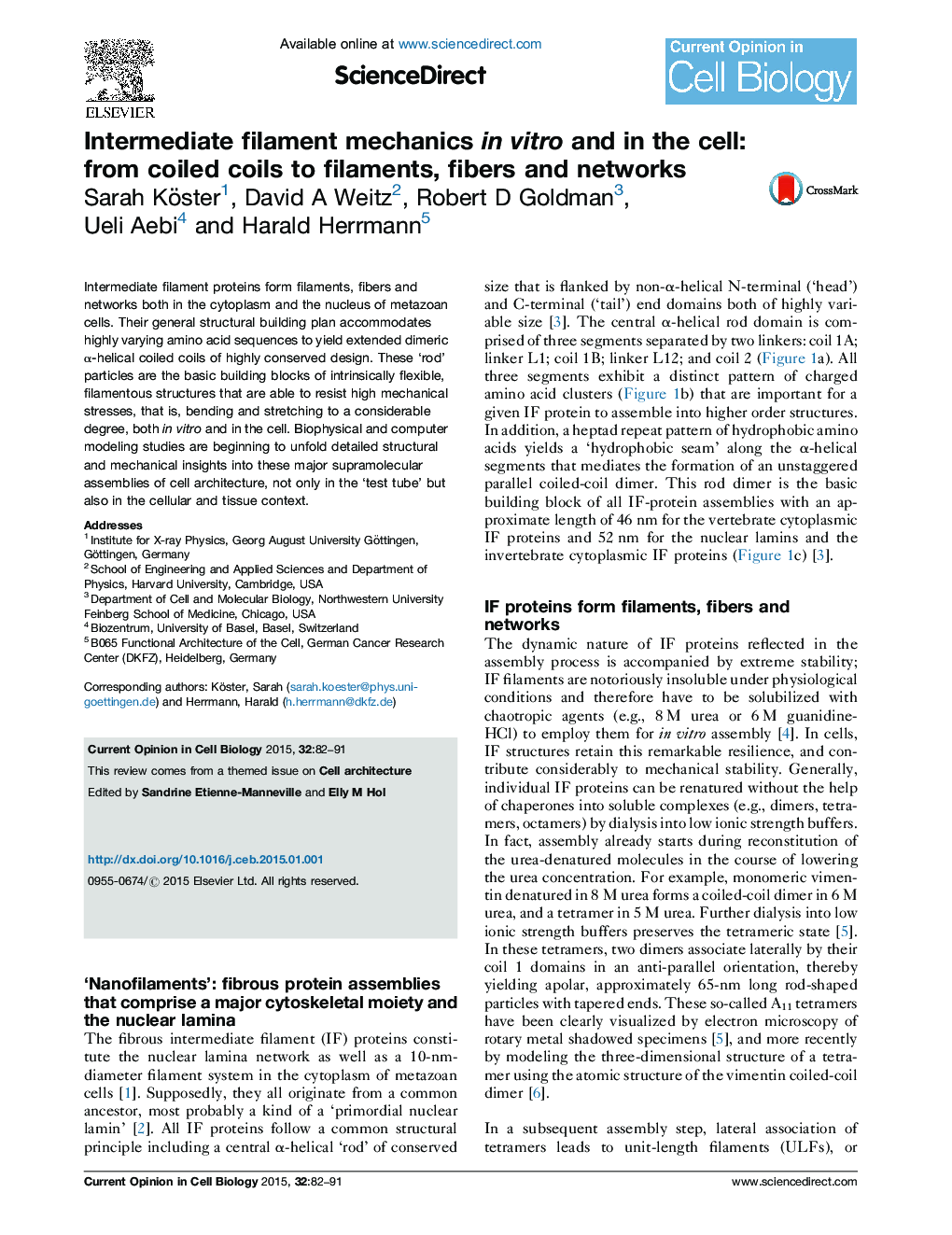| Article ID | Journal | Published Year | Pages | File Type |
|---|---|---|---|---|
| 8465701 | Current Opinion in Cell Biology | 2015 | 10 Pages |
Abstract
Intermediate filament proteins form filaments, fibers and networks both in the cytoplasm and the nucleus of metazoan cells. Their general structural building plan accommodates highly varying amino acid sequences to yield extended dimeric α-helical coiled coils of highly conserved design. These 'rod' particles are the basic building blocks of intrinsically flexible, filamentous structures that are able to resist high mechanical stresses, that is, bending and stretching to a considerable degree, both in vitro and in the cell. Biophysical and computer modeling studies are beginning to unfold detailed structural and mechanical insights into these major supramolecular assemblies of cell architecture, not only in the 'test tube' but also in the cellular and tissue context.
Related Topics
Life Sciences
Biochemistry, Genetics and Molecular Biology
Cell Biology
Authors
Sarah Köster, David A Weitz, Robert D Goldman, Ueli Aebi, Harald Herrmann,
